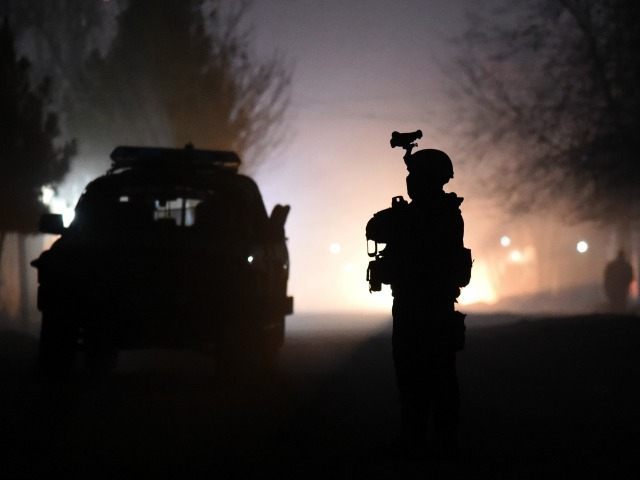The United States has reportedly conducted nearly a dozen operations in the past three weeks against jihadists linked to the Islamic State (ISIS/ISIL) branch in Afghanistan known as the Khorasan Province (ISIL-K), a testament to the U.S. military’s ongoing combat mission in the country.
In December 2014, President Obama, who escalated the U.S. military footprint in Afghanistan soon after taking office in 2009, announced that the U.S. military had ceased their combat mission in Afghanistan.
“Our combat mission in Afghanistan is ending and the longest war in American history is coming to a responsible conclusion,” declared the president at the end of December 2014, allegedly marking the beginning of the train, advise, assist mission on January 1, 2015.
Combat operations, however, have not only continued, they have been expanded to target ISIS in Afghanistan, beyond Iraq and Syria.
Since President Obama declared an end to the U.S. combat mission, at least 21 U.S. service members have paid the ultimate price in Afghanistan (11 killed in action; 10 non-hostile deaths) and 79 others have been wounded, bringing the total number of casualties since the war began in October 2001 to 2,227 deaths and 20,109 injuries.
The recent anti-ISIS operations in Afghanistan, which include commando raids and airstrikes, “followed President Obama’s decision last month to broaden the authority of American commanders to attack the Islamic State’s new branch in Afghanistan,” reports the New York Times (NYT). “The administration — which has been accused by Republicans of not having a strategy to defeat the group — is revamping plans for how it fights the terrorist organization in regions where it has developed affiliates.”
U.S. military officials have acknowledged that ISIL-K has established a stronghold in eastern Afghanistan’s Nangarhar province, which lies along the country’s border with Pakistan.
“Many of these recent raids and strikes in Afghanistan have been in the Tora Bora region of Nangarhar Province — an inhospitable, mountainous area in the eastern part of the country, near the border with Pakistan,” notes the Times. “It was in Tora Bora that Osama bin Laden and other senior Qaeda militants took refuge during the American-led invasion in 2001, and eventually evaded capture by slipping into Pakistan.”
“American commanders in Afghanistan said they believed that between 90 and 100 Islamic State militants had been killed in the recent operations. Intelligence officials estimate that there are roughly 1,000 Islamic State fighters in Nangarhar Province, and perhaps several thousand more elsewhere in the country,” it adds. “But even the generals leading the missions acknowledge that a resilient militant organization can recruit new fighters to replace those killed in American attacks.”
Top U.S. and Russian military officials have estimated that the ISIS force in Afghanistan could be up to 3,000-strong. Last September, a United Nations report revealed that the group was growing and actively recruiting in 25 (nearly 75 percent) of Afghanistan’s 34 provinces.
“The new authority gives us the ability to take the gloves off to hold them in check, and we have been targeting them heavily and it has had quite an effect,” Maj. Gen. Jeffrey Buchanan, the military’s deputy chief of staff for operations in Afghanistan, told NYT. “But just because you take a bunch of guys off the battlefield doesn’t mean you will stop this organization.”
“Although Mr. Obama had declared an end to combat missions in Iraq and Afghanistan, the operations are part of a continuing and potentially expanding American military footprint in south-central Asia, the Middle East and Africa for the fight against the Islamic State, also known as ISIS or ISIL,” concedes the Times.
In its most recent quarterly report to Congress, the Special Inspector General for Afghanistan Reconstruction (SIGAR), citing the Department of Defense (DOD), reveals that “approximately 8,950 U.S. forces were serving in Afghanistan as of December 30, 2015,” down from 9,500 at the end of the previous year.
The 8,950 figure is scheduled to be reduced to 5,500 by the end of President Obama’s tenure.
However, NYT notes that anonymous “administration and military officials are privately hinting that the president may again slow the troop withdrawal later this year.”
Washington Post recently quoted unnamed defense officials as suggesting that the war in Afghanistan will last for decades beyond 2017, when President Obama had indicated it would end.
The resilient Taliban and growing ISIL-K are proving “too formidable” for the Afghan security forces despite a $70 billion investment on their development and training.
Under the newly relaxed rules, President Obama sent to the Pentagon in January, the U.S. military only needs to show that a prospective target is linked to the Khorasan Province.
“Before, such a target could be struck only if it had significant ties to Al Qaeda,” points out the Times. “The military had been able to strike Islamic State targets in self-defense, but the new rules lower the standard for such offensive operations against the group.”
“Suffice to say we had built up a sufficient amount of intel to be able to go after them in a robust way once we were able to take the gloves off,” General Buchanan said, adding, “We continue to conduct operations against Al Qaeda throughout, but have been more focused on” ISIS in recent weeks.
While testifying before the Senate Armed Services Committee last week, Lt. Gen. John W. Nicholson Jr., President Obama’s nominee to be the next top commander of U.S. and NATO forces in Afghanistan, indicated that the overall security situation in Afghanistan was deteriorating, echoing SIGAR’s report to Congress and a recent Pentagon report.

COMMENTS
Please let us know if you're having issues with commenting.